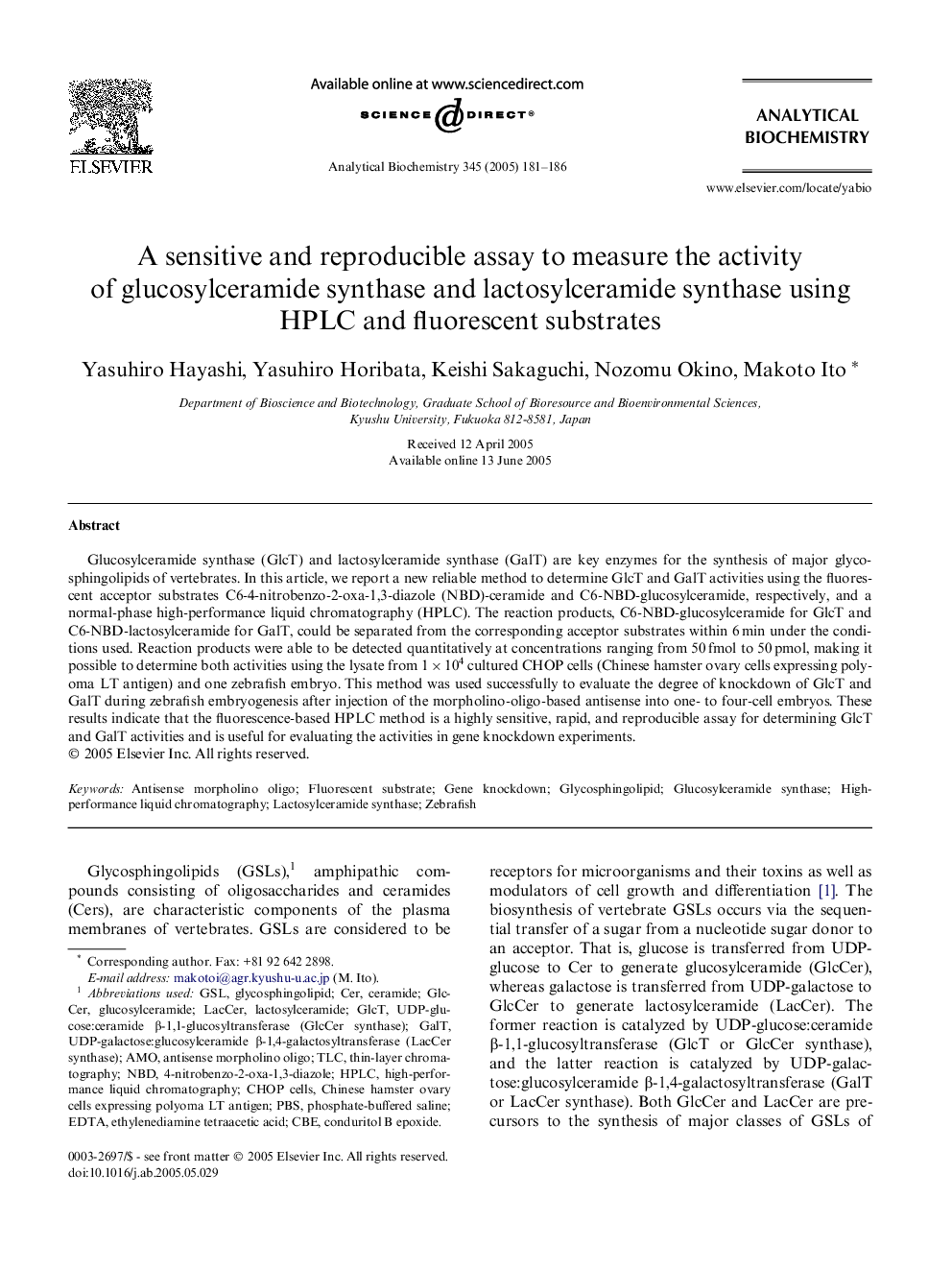| Article ID | Journal | Published Year | Pages | File Type |
|---|---|---|---|---|
| 10533041 | Analytical Biochemistry | 2005 | 6 Pages |
Abstract
Glucosylceramide synthase (GlcT) and lactosylceramide synthase (GalT) are key enzymes for the synthesis of major glycosphingolipids of vertebrates. In this article, we report a new reliable method to determine GlcT and GalT activities using the fluorescent acceptor substrates C6-4-nitrobenzo-2-oxa-1,3-diazole (NBD)-ceramide and C6-NBD-glucosylceramide, respectively, and a normal-phase high-performance liquid chromatography (HPLC). The reaction products, C6-NBD-glucosylceramide for GlcT and C6-NBD-lactosylceramide for GalT, could be separated from the corresponding acceptor substrates within 6Â min under the conditions used. Reaction products were able to be detected quantitatively at concentrations ranging from 50Â fmol to 50Â pmol, making it possible to determine both activities using the lysate from 1Â ÃÂ 104 cultured CHOP cells (Chinese hamster ovary cells expressing polyoma LT antigen) and one zebrafish embryo. This method was used successfully to evaluate the degree of knockdown of GlcT and GalT during zebrafish embryogenesis after injection of the morpholino-oligo-based antisense into one- to four-cell embryos. These results indicate that the fluorescence-based HPLC method is a highly sensitive, rapid, and reproducible assay for determining GlcT and GalT activities and is useful for evaluating the activities in gene knockdown experiments.
Keywords
Related Topics
Physical Sciences and Engineering
Chemistry
Analytical Chemistry
Authors
Yasuhiro Hayashi, Yasuhiro Horibata, Keishi Sakaguchi, Nozomu Okino, Makoto Ito,
